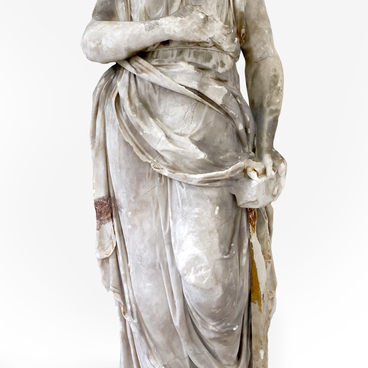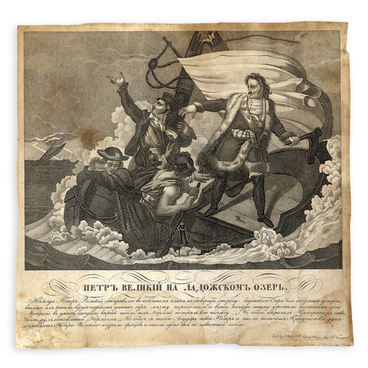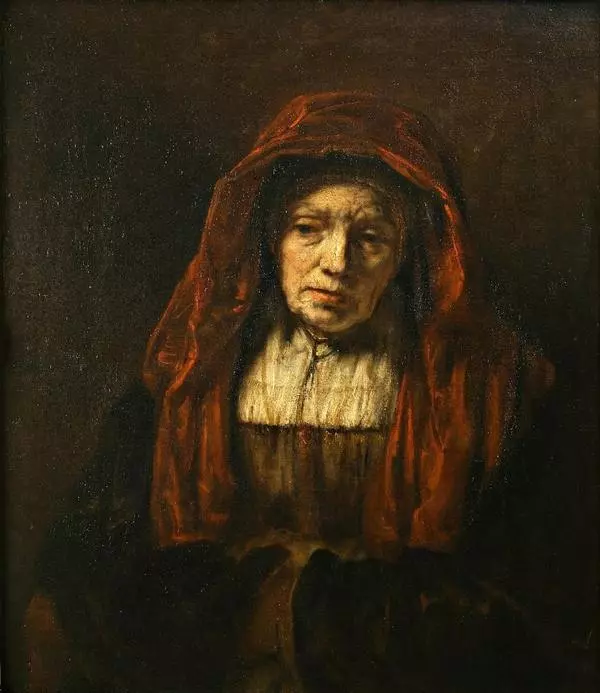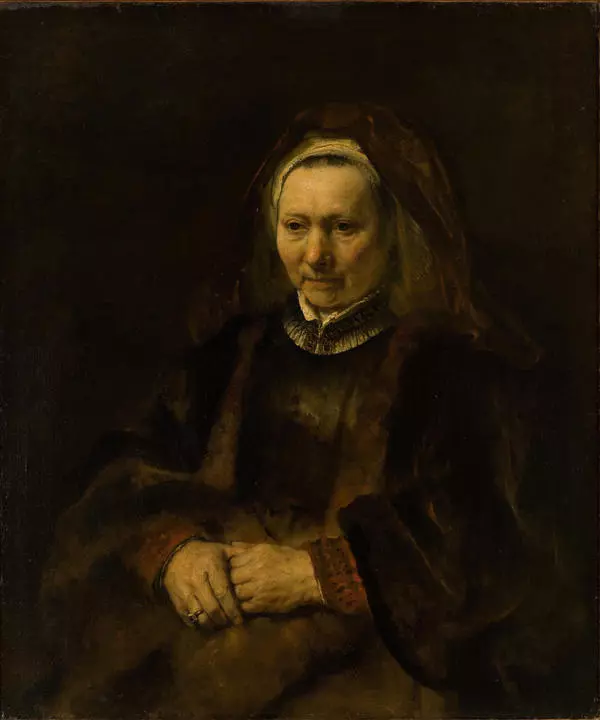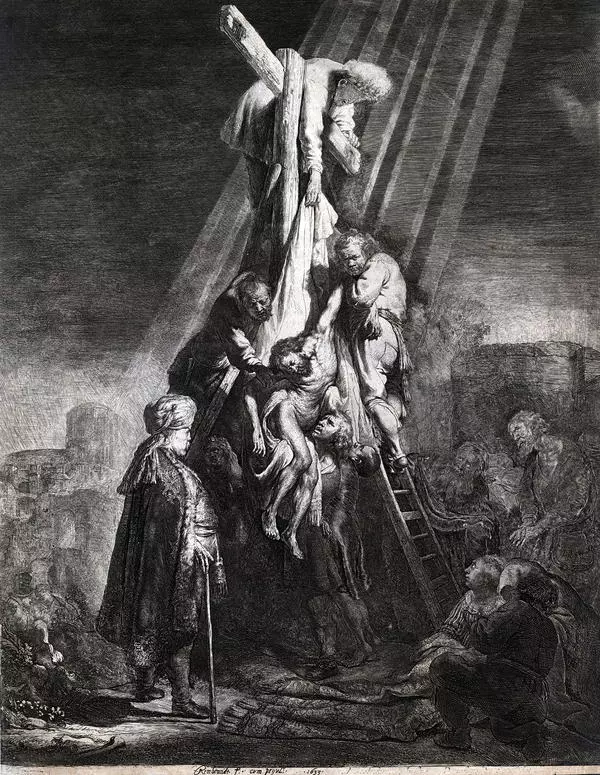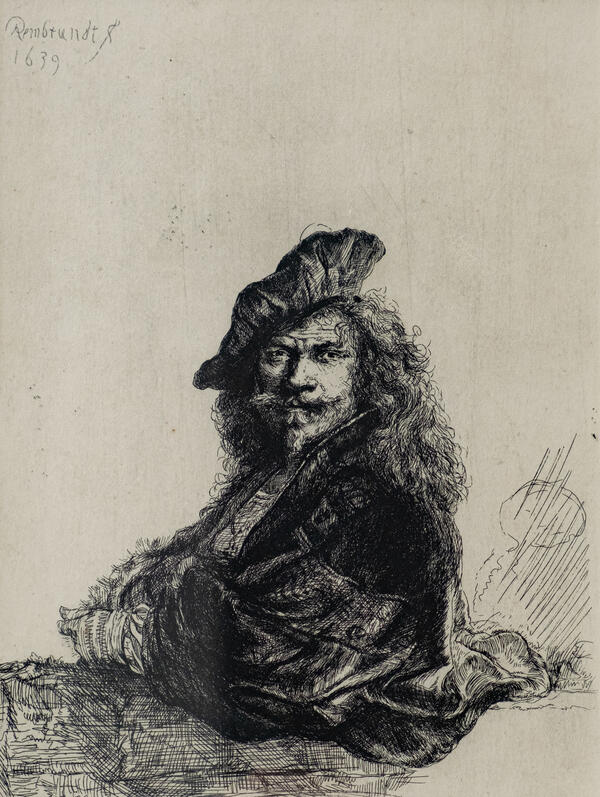The 17th century is considered the golden age of Dutch art. One of the most famous Dutch artists was the master of painting and graphic art Rembrandt van Rijn. The artist’s legacy is extensive: he worked in different genres and techniques, and became famous not only for his paintings, but also for his numerous engravings.
“Portrait of a Man in a Tall Hat” belongs to the early period of Rembrandt’s work. From 1627 to 1631, he lived in the city of Leiden on the Old Rhine River, where he and his friend Jan Lievens opened a studio. The name of the old man who posed for this portrait is unknown, but he often served as a model for Rembrandt’s works from this period. Several engravings of him have survived, and he is also recognizable in a number of historical scenes.
The artist created this work using the etching technique. The etching is a type of engraving; following the method, the author first draws the image on a metal plate covered with acid-resistant varnish and then etches it with acid. Rembrandt turned to this technique quite often, it allowed to make a lot of prints.
The engravings were inexpensive and sold well, and it was them that brought the artist pan-European fame during his lifetime. The etching technique allowed to apply very fine lines and shading, which helped to fulfill the idea of any degree of complexity. For many centuries and up to now Rembrandt has been considered one of the greatest masters of etching.
The artist depicted the elderly man in the portrait in a three-quarter turn. His tall turban-like hat is a characteristic headdress of a Dutch city dweller of that time. The man does not look at the viewer, he is immersed in his own thoughts. In his late period of work, Rembrandt was particularly fascinated by such types: portraits of old men became a way for the artist to reflect on the essence of human nature, the laws of the universe and the ability of man to comprehend them.
To a certain extent, this
portrait anticipates the future pictorial masterpieces of the 1650–1660s.
Rembrandt’s skill as an engraver is expressed here not only in his ability to
convey the different textures of the hat and garments, but also in the fine
lines used to render the light and shadow nuances of the portrait.
